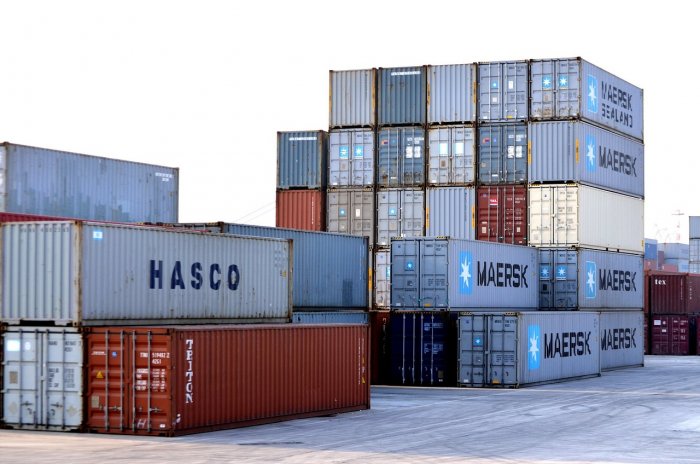ESG Goes Mainstream, Requires Action Today

There is a growing need for decision-makers to incorporate ESG (environmental, social, and governance) factors into their portfolios. Delivering sustainable and responsible investing, however, requires action from stakeholders across the board: asset owners, financial institutions, wealth managers, and government. These were the most important messages of the first virtual V4 ESG Conference organized by the Hungarian Business Leaders Forum (HBLF).
The mission of the April 27 event, which featured Budapest Business Journal editor-in-chief Robin Marshall as master of ceremonies, was to unite global and regional ESG leaders and change-makers from the private and public sectors for a day-long online conference to shed light on the most pressing challenges and opportunities presented by world-class ESG investment approaches.
Opened by Zsolt Jamniczky, chairman of HBLF and member of the board of directors at E.ON Hungária Zrt., the conference featured almost 40 world-renowned ESG experts.
In his presentation, Remy Briand, managing director of investment research firm MSCI called attention to the fact that the net-zero revolution is not just a necessity but also an opportunity for companies and investors.
Among future expectations, he highlighted the COP 26 UN Climate Change Conference, to be held in Glasgow in November, announcing several newcomers to mandatory Task Force on Climate-related Financial Disclosures (TCFD) reporting, newly set targets for emission reductions, and well-defined requirements for climate stress tests for central banks.
According to Briand, the transition will heavily depend on the critical role of technology and alternative data. Since asset owners are adopting new benchmarks, large financial institutions will face changing stakeholder preferences, he warned.
BlackRock Switzerland managing director Mirjam Staub-Bisang told the online audience that growth in sustainable investing outpaces asset management (AM) over time. In 2020, total AM growth was
only 5% compared to 27.3% in sustainable investing, generating some 5.5 times higher development. She also said that the biggest challenges to adopting sustainable investing remain ESG data and analytics.
The poor quality and availability of these remain key hurdles for stakeholders in almost all regions. According to her, the most important societal cornerstones for success are swapping fossil fuels for renewables, adopting new ways of living, and the extraction of greenhouse gases.
Changing Picture
Janson Channell, managing director for Citi Global Insights, gave a comprehensive picture of how the nature of risks has been changed both by globalization and by human and economic impacts. He explained that climate change provides a perfect example of the interlinkages between systemic risks and its ecosystem.
He emphasized the growing importance of supply chains as companies are often judged on sustainability metrics across the entire supply chain and downstream from their operations.
“However [much] progress and pace differ by asset class and by geography, ESG investing is now mainstream. Sustainable finance is simply about risk, opportunity, and the pricing and allocation of capital and, hence, it is fundamental to financial markets, and here to stay,” he said in his keynote.
David Radermacher, vice president for sustainability and climate at grid operator E.ON, confirmed that combatting climate change requires massive investments. According to him, ESG provides focus and drives innovation and new technologies.
E.ON has holistically implemented ESG to capture growth resulting from the collective fight against the climate crisis. He believes that the company’s approach creates values in the long-term through diversity, human rights, community involvement, health and safety, and resource efficiency. Strong ESG performance reflected in ESG ratings creates transparency and is rewarded by investors, he added.
Alastair Teare, Deloitte Central Europe managing partner, said that ESG is now a core part of any investment portfolio, with increasing activity from regulators, consumers, and employers. The sector is characterized by a lot of information but little standardization, according to him. He highlighted that robust methodology and well-defined risk management are needed.
“We are at the tipping point. Sustainability and broader ESG skills are core competencies required across all business areas,” he said, adding that there are several ways to approach ESG ranging from compliance considerations through a full assessment.
“The winners in this market will be those who can articulate their ESG policy and position their products early to take advantage of the growing interest in the market,” Teare explained.
Sustainability Architecture
The last keynote speaker of the morning was Robert Adamczyk, senior environmental advisor of the European Bank for Reconstruction and Development (EBRD). He explained how EBRD approaches ESG, giving an insight into European Union environmental and sustainability architecture.
The bank’s Action Plan on Sustainable Finance, as well as its new strategies, are based on the so-called European Green deal, a cross-sectoral plan to transition Europe to climate neutrality by 2050, and the new EU Climate Law that aims to place tackling climate change at the core of EU policymaking.
As a lender, EBRD’s finance legislation incorporates a Non-financial Reporting Directive (NFRD) laying down the rules on disclosure of non-financial and diversity information by large companies, as well as the EU taxonomy, the establishment of a list of environmentally sustainable economic activities, and finally the EU Sustainable Finance Disclosure Regulation (SFDR), providing greater transparency on the sustainability of financial products.
For the afternoon, the conference created a platform for moderated blockbuster roundtable discussions, bringing together prominent experts from the region to share experiences among peer professionals. Topics covered the likely latest trends on regional and global stock exchange operations and university research, as well as company best practices and strategies on climate risk in investment.
The event even provided content during the lunch and coffee breaks. In various breakout rooms, the champagnes of the Kreinbacher winery were introduced (with the opportunity to “win some fizz if you play the quiz”), and there was a chance to meet Damion Rallis and Matt Moscardifrom Free Float Media and discuss the topics and latest trends from their podcasts.
The conference brought together 38 keynote speakers, moderators, and panelists, it had some 50 co-operating partners, and it drew 200 attendees from 60 companies, including 40 students and researchers who were granted free access.
This was also the first ESG related conference organized by HBLF and the first time it has sought to cross borders and cover the V4 (which includes the Czech Republic, Poland, and Slovakia as well as Hungary) and the region. The hope is that this will become an annual conference.
This article was first published in the Budapest Business Journal print issue of May 7, 2021.
SUPPORT THE BUDAPEST BUSINESS JOURNAL
Producing journalism that is worthy of the name is a costly business. For 27 years, the publishers, editors and reporters of the Budapest Business Journal have striven to bring you business news that works, information that you can trust, that is factual, accurate and presented without fear or favor.
Newspaper organizations across the globe have struggled to find a business model that allows them to continue to excel, without compromising their ability to perform. Most recently, some have experimented with the idea of involving their most important stakeholders, their readers.
We would like to offer that same opportunity to our readers. We would like to invite you to help us deliver the quality business journalism you require. Hit our Support the BBJ button and you can choose the how much and how often you send us your contributions.









